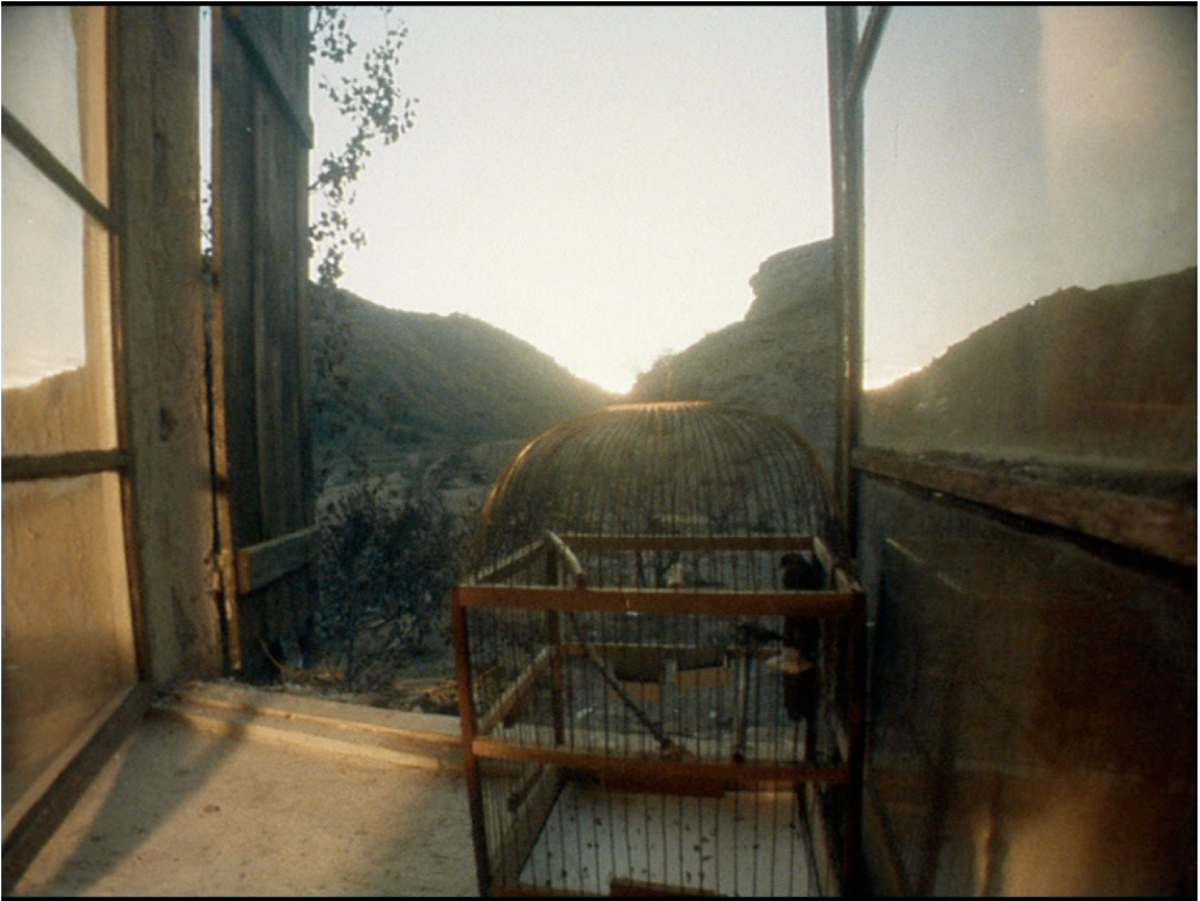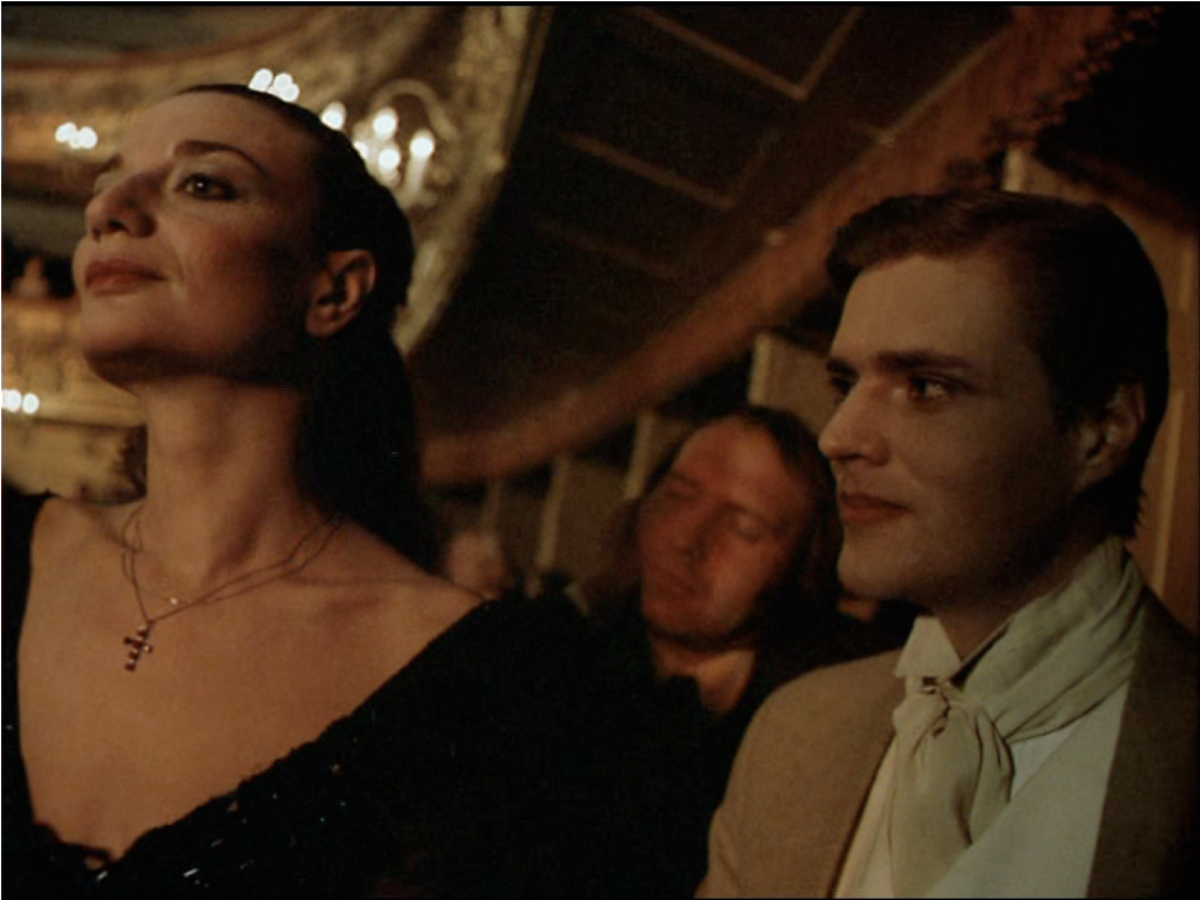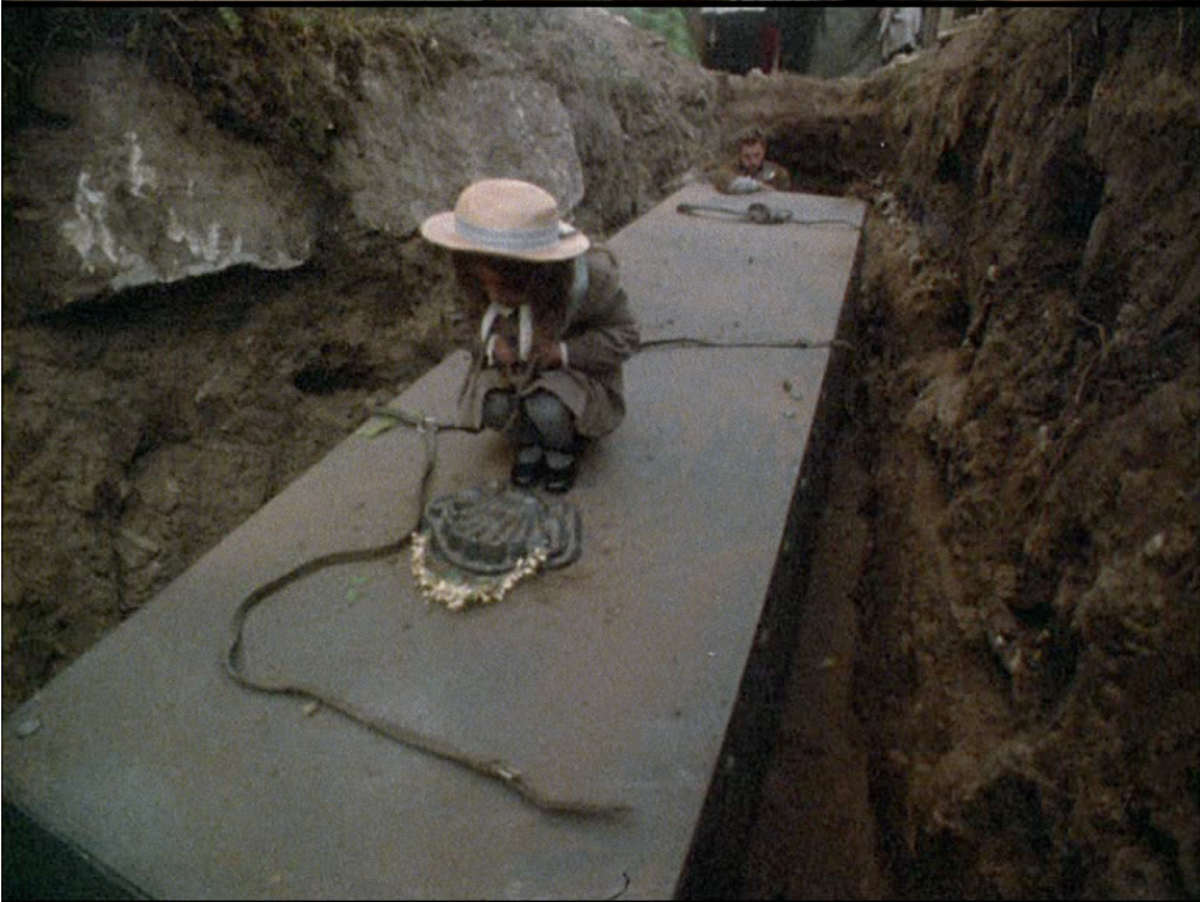Recently we’ve had the long-awaited DVD release of four key pieces from the early work of Alexander Sokurov. While UK distributors Artificial Eye released a three-piece box set containing films from the period ’89-’90 (Save and Protect and The Second Circle) in addition to the 2006 documentary Elegy of Life, the American Cinema Guild decided to pay homage to the director by matching up Save and Protect with Stone(1992) and Whispering Pages (1994). Transformed to both the Blu-ray and DVD format, these films look better than ever – a statement that is to be taken quite literally, as the greater part of this anthology used to be only available to those who didn’t mind cruising the internet for bootlegged .avi’s that seemed taped from daytime television. This is wonderful news for Sokurov aficionados both old and new, as these releases enable us to experience the visual poetry of Russia’s designated heir to Andrei Tarkovsky in pristine condition. Both the UK and the US box set take Save and Protectas their main feature, which is no coincidence since Sokurov’s third full-length film already displays the director’s specific sensibilities and visual aesthetics. Let me take this occasion to call attention to Save and Protect’s distinctive qualities.
Save and Protect contains a shot of about thirty seconds in which the camera slowly starts to pan from the left corner of the frame, providing us with a view on the entrance to a Romanesque cathedral, the steps covered in snow. A woman in black emerges. She looks troubled, then surprised, a figure in mourning whose sorrows have been temporarily elevated by the sight of the pretty flakes raining down from the sky. As she carefully touches a pile of snow and grinds a handful between her fingers, her young lover emerges from behind and decisively drags her along, not minding the frost in our protagonist’s hand. All the while we see his mind speeding on to more pleasurable things to come as he signals for a carriage, never aware or simply not interested in the woman’s enchantment with the sight of the world rendered immaculate (redeemed of its sins) by the carpet of snow. For several more seconds, the camera keeps up a dynamic horizontal pace, almost peacefully rushing along with the characters, accurately rendering the lovers’ sense of excitement as well as the inevitability of their demise. In this moment of photogénie, I associate the steady drum of passion with the Japanese concepts of shinju and michiyuki – the traditional ‘lovers’ walk’ to a double suicide. Although this case doesn’t really feature characters who actually want to die in a symbolic performance of their love, the sense of impending doom is very real. Save and Protect is Sokurov’s adaptation of Gustave Flaubert’s Madame Bovary and similarly treats the subject of a woman’s escape into sensuality to ward off the boredom of everyday life. As Flaubert’s novel testifies, the price for lust posing as the idealistic notion of self-fulfilment, is death.
As an auteur, we can most fittingly describe Sokurov as a late cinematic modernist, who seems more in line with the giants of cinematic modernism (Godard, Antonioni, Dreyer, Bergman) than with any other wave in film history, occupying the same anachronistic sphere in which other contemporary filmmakers such as Abbas Kiarostami like to reside. Sokurov’s visual poetics entail several modernist strategies that go against the appeal of naturalism and endow his cinema with an aura of artificiality. These techniques are typically indicated as the well-known tactics of Verfremdung. It’s safe to say that Sokurov’s cinema alienates, but it also acquires a certain sense of expressionism in its suggestion that artificial means such as the use of a schizophrenic soundtrack and distorting anamorphic lenses can be suitable tools for the exploration of a character’s inner state of mind. These explicit inserts not only clarify the presence of the director staging the story, but also acquaint us with a rich psychological landscape.

In Save and Protect, Sokurov outlines his heroine through manipulating three distinct cinematic parameters: sound, composition and framing. First off, Emma’s actions are frequently matched against the audio backdrop of buzzing flies, automatically suggesting a wide range of associations such as irritation, death, decay and the suffocating stench of mundane, everyday life. Initially, this little stratagem seems to spell out Emma’s disgust for her husband and her mediocre surroundings, alternately juxtaposing the insects’ murmurs with horrifying scenes of marital intercourse or a shot of Emma disapprovingly grooming her Neanderthal husband. It’s clear that Emma wants more out of life. She wants to live (“Vivre, tu comprends?”) and tries to satisfy her longing for a distant paradise with trips to the local quack-merchant who supplies her with the toiletries of a Parisian dame du monde (a chinoiserie fan with which to coquettishly hide herself from the coarse manners of her husband, a map of Paris, a dress fresh from the grave of a deceased duchess). These artefacts help Emma to externalise the ‘elevated’ bourgeois nature she feels within, a wish Sokurov further substantiates by continually switching the audio track from Russian to French whenever Emma tries to engage with her inner femme fatale. Also, the distant ringing of a steam engine – an auditory trope that’s also present in Sokurov’s Mother and Son and that he seems to have snatched from his spiritual father Andrei Tarkovsky – further aids in translating Emma’s permanent state of melancholy yearning. When applying this trope to a sequence that re-enacts the Garden of Eden motif with Emma and her lover strolling naked through a meadow (the leitmotif of swaying grass almost always feels like another homage to Tarkovsky), the sound waves of the steam engine take on the distinct feeling of inner peace.
Apart from the bilingual experimentation on the soundtrack and the recurring acoustic triggers that allude to certain emotional states of mind, the image itself is often formally psychologised as well. In his oeuvre, Sokurov shows a cultivated interest in art history and the notion of the cinematic image as tableau. To say that Sokurov doesn’t shy away from slow, minimalist or so-called meditative cinema that stretches the experience of the narrative to its outer limit, sometimes using static long takes that hardly seem to stir the characters that inhabit them, would be an understatement. Prone to the invocation of dreamscapes, his films often assume a painterly quality that prompt the actor to pose rather than move, celebrating instances of iconic stasis. Bearing in mind the description of photogénie, one feels inclined to proclaim Sokurov’s cinematic magic as shifting the balance between movement and composure, a case of genre painting brought to life. Just as with painting or photography, the virtues of the visual image are always used to their full advantage: it is the image that tells the story and contains the key to its meaning. In the case of Save and Protect, a key sequence uses a modest Dutch angle, the camera tilted to the left: in scene that takes place at the opera, a reaction shot portrays the triumvirate of Emma, her husband and lover attending the performance. While the husband dozes off and the lover admiringly looks at Emma, she only has eyes for the spectacle on stage, her ‘elevated’ position in the frame suggesting an immutable involvement with the absolving effects of the higher arts.

Sokurov also embraces anamorphic lenses that elongate the frame and underline Madame Bovary’s plea to ‘take her far away from here’. One instance shows a magnificent shot of Emma reclining on a rock, having just said goodbye to her lover whom we can still see retreating to the far right of the screen while the winding road and Emma’s outstretched arm harmonize with the waning smoke of the cigarette she snatched as a last token from her dear departed. Not only does this image evoke a pervading sense of saudade (a hunger for that which is already lost or what we never really owned in the first place) that refers to Emma’s ungratified desire to be free, but the prominent diagonal dynamic of in-depth expansion also recalls similar compositions (such as the window view of a distant landscape blocked by the symbolic bird in a cage) that augment the overall effect with remembered layers of the same emotional note. By the end of the film, the diagonal in-depth composition seems to solicit in the viewer a Pavlovian conditioned response – in provoking a sense of longing for inner transformation and transcendence – that aligns itself with the thematic conclusion of the whole. One of the last iconic diagonals presents Emma’s absurdly elongated coffin, suggesting that the apogee of her desire was bound to coincide with death. Only now can we fully make sense of the ubiquitous sound of flies, apparently not only denoting Emma’s resistance to the earthly banalities associated with her beastly husband as one of the main obstacles in her quest for spiritual enrichment, but actually serving as a persistent memento mori.
